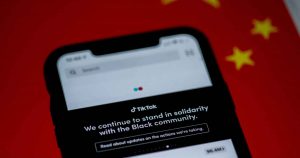The iPhone Supply Chain: A Global Network Driving Innovation

The iPhone, Apple’s iconic smartphone, has become a global sensation, captivating users worldwide with its cutting-edge features and sleek design. Behind the scenes, a complex and extensive supply chain network operates seamlessly to ensure the production and availability of iPhones around the globe. In this article, we explore the intricacies of the iPhone supply chain, highlighting the global collaborations and processes that drive innovation and enable Apple to meet the demands of millions of customers.
Raw Materials and Component Sourcing
The iPhone supply chain begins with the sourcing of raw materials and components from various parts of the world. Apple works closely with suppliers globally to procure essential materials like aluminum, glass, lithium-ion batteries, and rare earth minerals. The supply chain extends to specialized suppliers for components such as processors, memory chips, camera modules, and displays. This global network ensures a steady supply of high-quality materials and components needed for iPhone production.
Manufacturing and Assembly
The manufacturing and assembly of iPhones are primarily concentrated in China, where Apple partners with contract manufacturers like Foxconn, Pegatron, and Wistron. These companies operate massive production facilities with highly advanced manufacturing processes. The components sourced from around the world are meticulously assembled, undergo rigorous quality checks, and are transformed into finished iPhones. The scale and efficiency of these facilities allow Apple to meet the enormous demand for iPhones worldwide.
Logistics and Distribution
Once iPhones are manufactured, they undergo a tightly orchestrated logistics and distribution process to reach markets globally. The finished devices are packaged and transported via air, sea, and land to distribution centers strategically located worldwide. From there, the iPhones are further distributed to retail stores, carriers, and online platforms. Apple’s meticulous planning and logistics management ensure a smooth flow of iPhones to meet launch dates and satisfy customer demand across different regions.
Quality Control and Compliance
Maintaining strict quality control standards is paramount in the iPhone supply chain. Apple conducts rigorous inspections and quality assurance procedures at various stages, including material sourcing, manufacturing, and assembly. Compliance with environmental regulations, labor standards, and ethical practices is also a key focus. Apple has implemented comprehensive supplier responsibility programs to ensure its partners adhere to social and environmental standards, promoting sustainability and responsible practices throughout the supply chain.
Innovation and Collaboration
The iPhone supply chain thrives on continuous innovation and collaboration. Apple works closely with suppliers and partners, fostering long-term relationships to drive technological advancements. Joint research and development initiatives enable the integration of cutting-edge technologies into future iPhone models. Collaborations extend to software developers and app creators who contribute to the iPhone’s ecosystem, enriching the user experience and expanding the device’s capabilities.
Challenges and Adaptability
The iPhone supply chain is not without its challenges. Fluctuations in global demand, geopolitical factors, and natural disasters can disrupt the supply chain’s delicate balance. However, Apple’s supply chain management focuses on adaptability and resilience. The company diversifies its sourcing and manufacturing capabilities, ensuring flexibility to mitigate risks and maintain a steady supply of iPhones.
Conclusion
The iPhone’s success as a global phenomenon is underpinned by a vast and intricate supply chain network. From sourcing raw materials and components to manufacturing, logistics, and distribution, numerous stakeholders collaborate across borders to bring the iPhone to customers worldwide. The supply chain’s ability to adapt, innovate, and maintain high-quality standards contributes to Apple’s continued success in meeting the demands of millions of users, reaffirming its position as a leader in the ever-evolving smartphone market.







